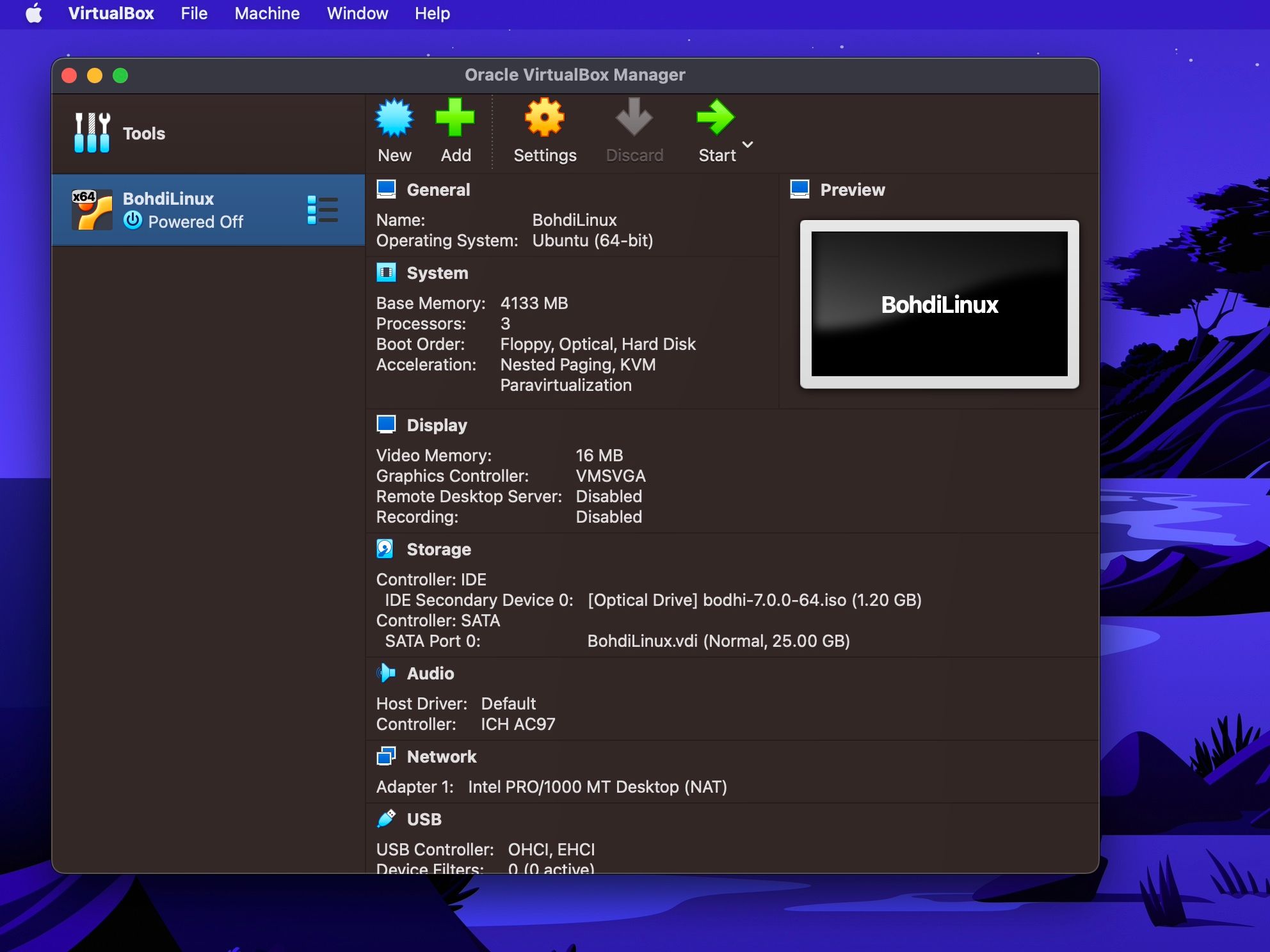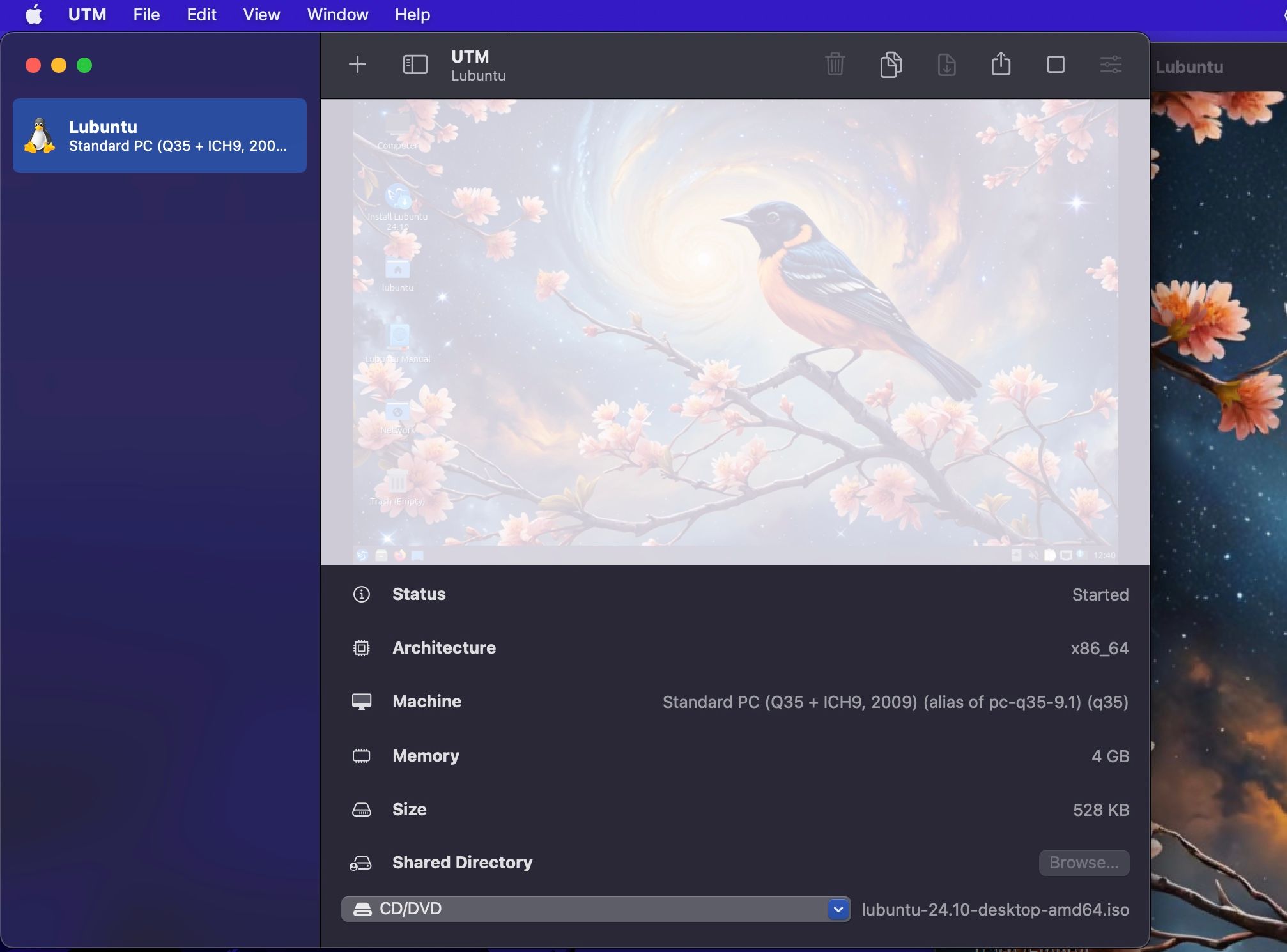Summary
- VirtualBox is feature-rich with broad Linux distro support, but may have slower performance on modern Apple silicon Macs.
- UTM is lightweight, optimized for Apple silicon Macs, and easy to use, but lacks graphics virtualization and advanced features.
- Choose VirtualBox for advanced features and Intel Macs, UTM for simple setup and better performance if you have an M1 chip or later.
If you’re looking to run a Linux virtual machine (VM) on your Mac, you might be stuck choosing between VirtualBox and UTM. Both are popular VM options, but which is better for running Linux on macOS?
What Are VirtualBox and UTM?
Let’s dive into how each one stacks up when it comes to Linux VMs.
VirtualBox
It’s my go-to VM on both my MacBook and PC. VirtualBox is free and open-source, meaning you can freely modify, use, and contribute to its code. It also offers cross-platform support, working across macOS, Windows, and Linux, so you can manage Linux VMs on all your devices.
Virtualbox Manager With Bodhi Linux
It supports a wide range of Linux distributions (distros), whether you’re looking to run a lightweight version that uses fewer resources like memory or storage like Ubuntu Server, or something heavier like Fedora.
VirtualBox is feature-rich, offering snapshots that allow you to save and restore the state of your VM, which is helpful when experimenting with Linux. Shared Folders let you easily transfer files between your macOS host and the Linux guest OS (which is running inside the VM).
It also includes Seamless Mode, which enables Linux applications to run alongside macOS applications, providing a smoother experience when switching between the host and guest systems.
There are a few downsides to using VirtualBox. On Apple silicon Macs (M1 or later), performance can be slower due to virtualization overhead, meaning your Mac has to split its resources between macOS and the virtual Linux system, which can slow things down.
It also has higher system resource usage, especially with heavier Linux distros, which consume more memory, processing power, and storage. Additionally, VirtualBox requires extra setup for USB support and certain other features, which might make it a bit more complicated to get everything working smoothly.
UTM
UTM is a macOS-specific VM that utilizes Apple’s Hypervisor framework, which allows multiple VMs to run independently while staying isolated from the main OS. This results in better performance on Apple silicon Macs. UTM is built on a complex emulator called QEMU, with the added benefit of vastly simplifying the process of getting VMs up and running compared to using QEMU alone.
UTM Manager With Lubuntu On Screen
UTM provides a simple, macOS-friendly user interface, making it easy to set up Linux VMs without a steep learning curve. On top of that, it is lightweight and uses fewer computer resources (think memory and storage) compared to VirtualBox, which is great if you’re running Linux VMs on an older Mac.
Now let’s get into UTM’s limitations. Its guest OS support is more restricted compared to VirtualBox, meaning it doesn’t support as many Linux distros or advanced features. It also lacks graphics virtualization, so it can’t handle 3D rendering (how your computer draws realistic graphics, like in video games or 3D design programs). GPU-intensive tasks like gaming, video editing, or running complex simulations that require a powerful graphics card are not supported.
Additionally, UTM is limited to macOS, so if you need to run a Linux VM on another platform, it won’t be an option.
VirtualBox vs UTM: Feature Comparison
|
Feature |
VirtualBox |
UTM |
|
Ease of Use |
Might be tricky for beginners |
Very easy and simple to use |
|
Linux Compatibility |
Broad compatibility with various Linux distros |
Supports popular Linux distros (but fewer options) |
|
Graphics Virtualization |
Yes |
No |
|
Performance on Apple silicon Macs |
Slower |
Faster |
|
Performance on Intel Macs |
Faster |
Slower |
|
Advanced Features |
Additional features like snapshots, shared folders, seamless mode |
Fewer features, no seamless mode, and advanced guest OS support |
Which Should You Choose for Linux VMs?
Use VirtualBox if you need compatibility with a wide range of Linux distros, require advanced features like snapshots, shared folders, and seamless mode, or are using an Intel-based Mac for better Linux performance.
Use UTM if you have an Apple silicon Mac and want a lightweight, optimized solution, an older Mac that could benefit from a more resource-efficient VM, or if you don’t plan to run graphics-intensive applications in your Linux VM.
Both VirtualBox and UTM have their strengths. For most users, UTM’s simplicity and the fact that Apple silicon models are now widespread makes it the best choice for most users. If you need broader Linux distro support with more advanced features or are still using Intel, VirtualBox is the better option.
Want to get started? Learn about setting up a Linux VM with UTM or how to install Linux in VirtualBox. The other option is to use paid software like Parallels Desktop.





